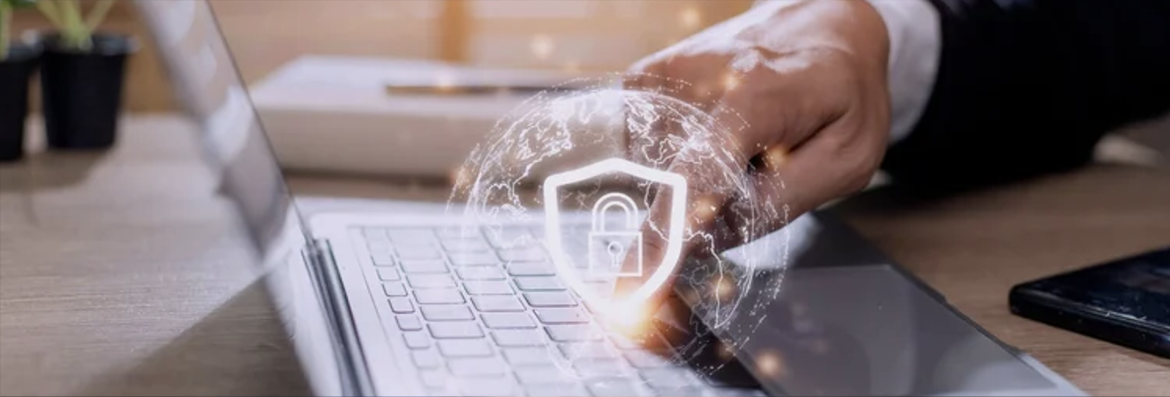Remote Access Software: Cybersecurity Risks and Solutions
Date: 20 May 2023
.jpg?width=1170&name=Remote%20Work%20(1).jpg)
As the world becomes increasingly digitized, remote access software has become an essential tool for businesses of all sizes. With remote access software, employees can access company resources from anywhere in the world, allowing for increased productivity and flexibility. However, with this convenience comes significant cybersecurity risks.
This article will explore the importance of remote access software for cybersecurity and how you can protect your business from cyber threats.
What is Remote Access Software?
Remote control software is a tool that allows users to connect to a computer or network from a remote location. The global remote access software market is projected to reach USD 3.829 billion by 2025, according to Research & Markets. This is typically done through a virtual private network (VPN), which creates a secure connection between the remote user and the network. Remote access software can be used for a variety of purposes, including:
- Accessing company resources from home or while traveling
- Providing technical support to remote users
- Collaborating on projects with remote team members
- Monitoring network activity and troubleshooting issues
Remote access software comes in many forms, from free, open-source tools to enterprise-level solutions. Some popular remote access software solutions include:
- TeamViewer
- LogMeIn
- Remote Desktop Connection (built into Windows)
- VNC Connect
- AnyDesk
Remote Access Software & Cybersecurity
Remote access software is an important tool for many businesses but presents a significant cybersecurity risk. When employees use remote access software to connect to a company network, they are essentially opening a door into the network that cybercriminals can exploit.
Some common cybersecurity risks associated with remote access software include:
- Weak passwords: If employees use weak or easily guessable passwords, cybercriminals can gain access to the network and steal sensitive data.
- Unsecured networks: If employees use public Wi-Fi networks to connect to the network, cybercriminals can intercept their traffic and steal sensitive data.
- Unpatched software: If remote users are not using the latest version of the remote access software, they may be vulnerable to known security vulnerabilities that have not been patched.
To mitigate these risks, businesses must take steps to secure their remote access software and educate their employees on safe remote access practices.
How to Protect Your Business from Cyber Threats associated with Remote Access Software?
- Use a Strong Password Policy: A strong password policy is one of the most effective ways to secure your remote access software. This includes requiring employees to use complex passwords that are difficult to guess and to change them regularly. It's also a good idea to use two-factor authentication (2FA) to add an extra layer of security.
- Implement Network Segmentation: Network segmentation is the practice of dividing a network into smaller subnetworks, which can help limit the impact of a cyber attack. By segmenting your network, you can prevent an attacker from moving laterally across the network and accessing sensitive data.
- Use Encryption: Encryption is a powerful tool for protecting sensitive data from prying eyes. Encryption is vital when using remote access software to protect data in transit. This can be done using a VPN or by using an encrypted remote access solution.
- Keep Software Up to Date: One of the most crucial steps you can take to protect your business from cyber threats is to keep all software up to date, including remote access software.
Cybercriminals are constantly looking for vulnerabilities to exploit, and software vendors regularly release patches to fix these vulnerabilities. Keeping your software up to date can significantly reduce your risk of a cyberattack. - Educate Your Employees: Finally, it's important to educate your employees on safe remote access practices. This includes teaching them how to use strong passwords, avoid public Wi-Fi networks, and keep software up to date. It's also necessary to teach employees how to recognize phishing emails and other types of cyber attacks that target remote workers. The key members of the IT team must also be trained in Cyber Incident Response & Planning so that they know what to do in case a remote worker's system has been compromised.
How to Choose the Right Remote Access Software
You now know the benefits of remote access software as well as the associated cybersecurity concerns. You might now be wondering how to choose the right software. So, here are a few things to consider:
- Security: Security should be your top priority when choosing remote access software. Ensure that the software uses encryption to protect data and has features like two-factor authentication (2FA) and access controls to prevent unauthorized access.
- Compatibility: Ensure the remote access software is compatible with your operating systems and devices you'll be accessing. Some software might not work on certain devices or may require additional software or plugins to function correctly.
- Ease of Use: Choose remote access software that's easy to use and doesn't require a steep learning curve. The last thing you want is to spend hours trying to figure out how to use the software when you could be resolving issues.
Conclusion
Remote access software is a powerful tool for businesses that want to increase productivity and flexibility. However, it also presents a significant cybersecurity risk that must be addressed. Businesses can significantly reduce their risk of a cyber attack by using strong passwords, implementing network segmentation, using encryption, keeping software up to date, and educating employees on safe remote access practices.
Remember, cybersecurity is an ongoing process, and staying vigilant and proactive in protecting your business from cyber threats is essential. By securing your remote access software, you can ensure that your business stays protected and continues to thrive in the digital age.



.webp)
.jpg)

